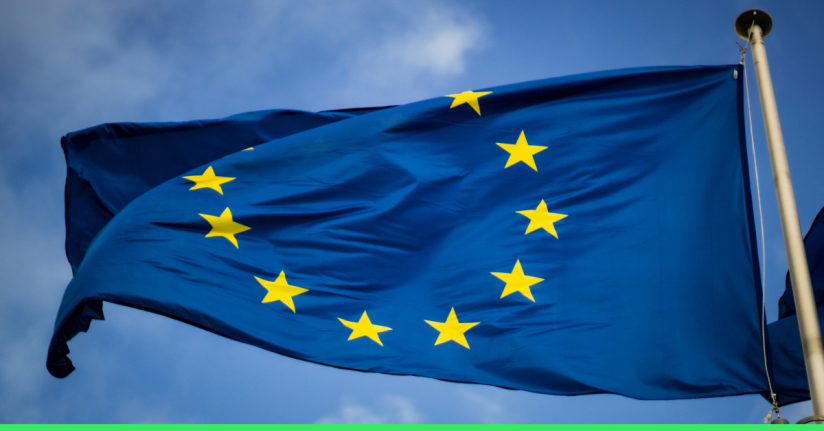ANALYSIS: Eurex sees fixed income revenue backloaded on EMIR 3.0
3rd December, 2024|Gregory Rosenvinge

Eurex is confident the German group is on track to meet its fixed income revenue targets as part of the exchange’s Horizon 2026 strategy, arguing net revenues will be backloaded due to delays around European active account regulation.
Speaking at an analyst call on fixed income derivatives plans for Eurex and its parent company Deutsche Boerse last week, Eurex Clearing chief executive Erik Mueller said the Frankfurt-based exchange is set to benefit from European Market Infrastructure Regulation (EMIR) 3.0 going live, likely next year.
“Our approach not only aligns client interest with our own strategy, but also with EU regulatory aspirations of greater strategic autonomy around the euro currency. Looking ahead, the Eurex fixed income roadmap will contribute €300 million (£250m) additional net revenue to the group’s Horizon 2026 strategy,” said Mueller (pictured) during the call.
“So far, we have achieved roughly a third of this goal and are expecting to deliver another €200 million in net revenue growth by the end of 2026. We can nevertheless say we are right on target, as we anticipated net revenues to be backloaded somewhat due to the delays we have seen around EMIR 3.0, which is only now finally coming to law.”
This is set to benefit Eurex which wants to take clearing in Euro-denominated products from London-based competitors ICE Clear Europe and LCH.
Eurex’s Mueller said the Frankfurt-based exchange has “successfully built a liquid alternative” to LCH for interest rate swaps, with Eurex Clearing liquidity being available “across multiple platforms”.
“Depending on which metric you look at, we have a market share of roughly 20% in notional terms and around 10% in average daily volume (ADV) terms, and a positive outlook for further growth due to the EMIR 3.0 active account requirement,” said Mueller during the Deutsche Boerse analyst call.
“We onboarded over 600 clients so far and are expecting further growth. The European Commission itself estimated that around 400 additional clients might need onboarding in an EMIR 3.0 context. Another consequence of the active account requirement is that we expect further account activation from the buy-side – today, only roughly one third of buyside clients are active.”
Representatives from Eurex and Intercontinental Exchange (ICE) disagreed on the active account regulation at the IDX conference in London in May. ICE Futures Europe president Chris Rhodes said: “When it comes to regulatory intervention, it should be about addressing market failure or harm to a client or an asset class. To me, it is not clear that EMIR 3.0 and particularly the active account component addresses any of that.”
Eurex launched in November last year a new programme designed to win short-term interest rate futures trading volume from ICE Futures Europe, which dominates that market. FOW Data shows Eurex’s trading of three-month Euribor futures have since fallen from a peak of 4.62 million contracts in March to 1.43 million lots in October. Prior to March, volume made a strong start from November last year, hitting 1.56 million contracts.
Eurex’s three-month Euribor futures open interest reached an all-time monthly high of 118,188 contracts last month, according to FOW Data, beating the previous peak of 110,650 lots in July.
The German exchange still has a long way to go to match the ICE venue, however, which reported three-month Euribor futures open interest of 5.07 million contracts on Monday last week and traded as high as 3.27 million contracts in the European short-term interest rate (STIR) future on November 22, according to ICE Futures Europe.
Mueller said volumes should continue to rise for Eurex: “In general, we believe that Euro based firms in aggregate account for the majority of Euro swap risk, i.e. that the active account requirement will be felt in the volumes after the requirement kicks in roughly six months from now, which is summer 2025. Therefore we see ourselves in a good position to grow revenues further.”
The Eurex Clearing chief executive said: “Our strategy is for Eurex to become the home of the Euro yield curve, a unique and attractive value proposition around margin collateral and capital efficiencies for clients. We already are on a very successful journey and have reached important milestones.
“First, we are the second largest liquidity pool globally for Euro denominated interest rate swaps, with €35 trillion in notional outstanding. Second, we are the global leader in Euro government bond futures and operate derivatives for all of Europe's key government bond benchmarks, such as Bund Bobl Schatz in Germany, OAT in France and BTB in Italy. Third, together with Clearstream, we pioneered an innovation in the funding driven Euro repo market with a product called Euro GC Pooling.”


